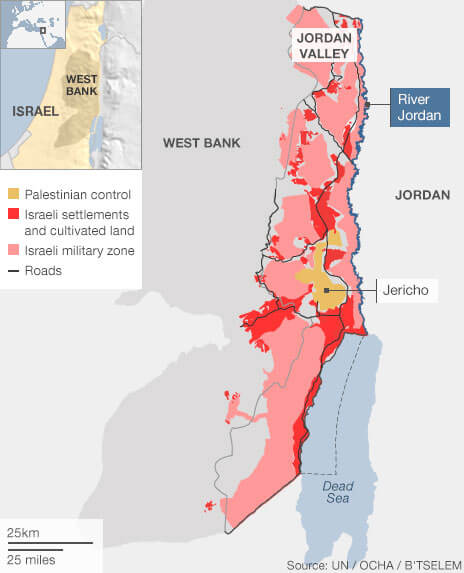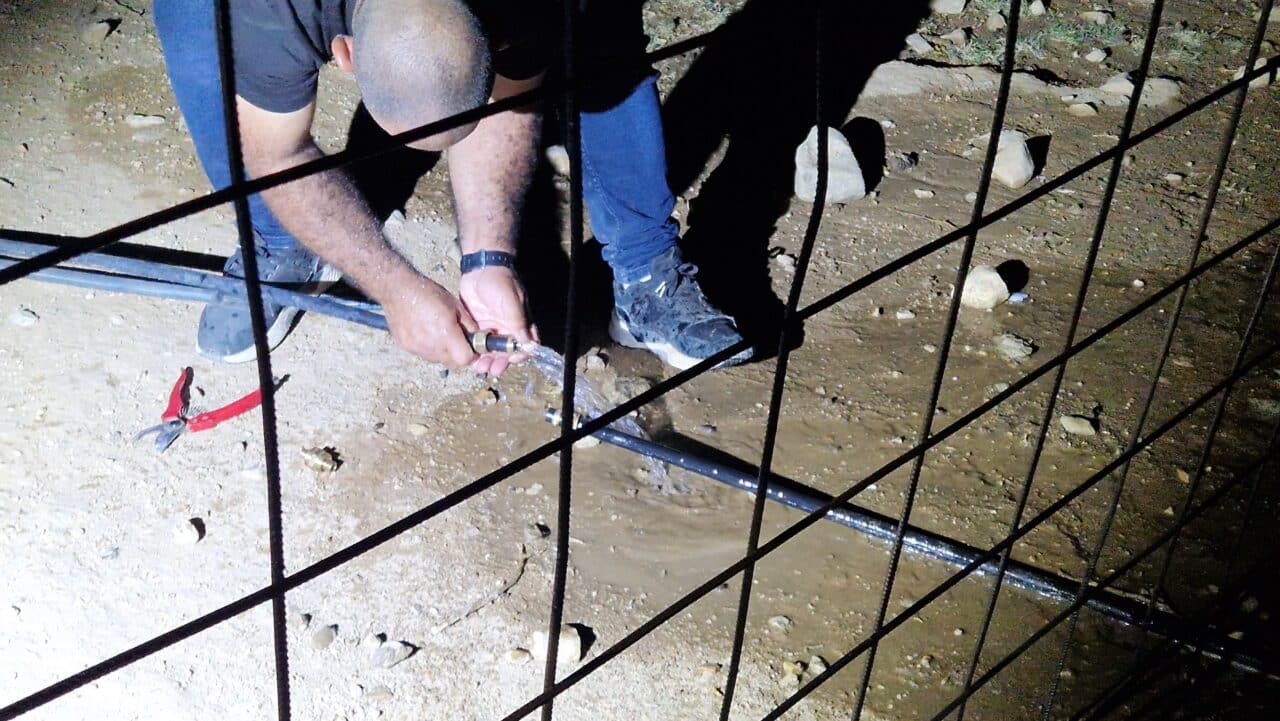Bantustan Borders: Israel’s Colonisation of the Jordan Valley and the security myth
Ben White: First published in Middle East Monitor 6th November 2013
 At the regular cabinet meeting on Sunday, Israeli PM Netanyahu repeated a demand that as part of any future agreement with the Palestinians, Israel would maintain a “security border” in the Jordan Valley. The same day, Israeli media reported that Netanyahu has ordered the construction of a security barrier on the Jordanian border in a development that one Israeli journalist said would “finalize the West Bank’s complete closure”.
At the regular cabinet meeting on Sunday, Israeli PM Netanyahu repeated a demand that as part of any future agreement with the Palestinians, Israel would maintain a “security border” in the Jordan Valley. The same day, Israeli media reported that Netanyahu has ordered the construction of a security barrier on the Jordanian border in a development that one Israeli journalist said would “finalize the West Bank’s complete closure”.
This is not the first time that Netanyahu has insisted on a long-term Israeli claim to the Jordan Valley. In 2010, for example, he told the Foreign Affairs and Defense Committee that “Israel would never agree to withdraw from the Jordan Valley under any peace agreement signed with the Palestinians”, while in his 2011 speech to Congress, the Israeli PM asserted that “a long-term military presence along the Jordan River” would be “absolutely vital”.
In January 2012, Netanyahu told Likud members that he would “sign a permanent agreement only if it includes Israel’s remaining in the Jordan Valley”, remarks which anonymous officials later claimed referred only to a “security presence”.
The security rationale even extends to a justification for the denial of building permits to Palestinians in the area, with an unnamed government official telling the BBC this week that “the Jordan Valley is in part a security-sensitive area”, thus making “certain areas unsuitable for private development.” Yet as with other Israeli policies such as the West Bank settlement network and the Separation Wall, Israel’s motivations when it comes to the Jordan Valley seems more based on colonisation and economic profit than on security concerns.
The targeting of Palestinian communities in the Jordan Valley for expulsion and home demolitions is sadly commonplace, with periodic bursts of evictions and destruction – such as one “wave” in summer 2010 that targeted villages pre-dating the 1967 occupation (thus paralleling the ‘legal’ façade given to the destruction of Bedouin homes in the Negev). Israeli soldiers and bulldozers attack Palestinian shepherds and families, with occupation forces even demolishing emergency shelter thrown up to help newly-homeless villagers by aid workers.
Meanwhile, Israeli settlements in the Jordan Valley continue to flourish, part of what was described already in 2006 as “de facto annexation“, and where settlement councils play a role in making sure that “in almost the entirety of the Jordan Valley, Palestinian construction is prohibited”. Using different methods, “out of an area of 1.6 million dunams in the Jordan Valley, Israel has seized 1.25 million − some 77.5 percent − where Palestinians are forbidden to enter”.
As the PA pointed out in response to Netanyahu’s recent remarks, Israel makes hundreds of millions of dollars from the settlements in the Jordan Valley, with 40% of Israeli dates exported to the European Union grown in the area’s colonies. While settlers even farm private Palestinian land, Palestinians – including children – are exploited as cheap labour. In one particularly stark example of this apartheid regime, one settlement receives water for its bananas equivalent to 25-40% of the quota granted to an entire Palestinian village for all its residents “consumption needs“.
What is happening today is a continuation of the ethnic cleansing that began following the Six Day War in 1967. The scale of the expulsions is often forgotten, but in a short period of time, an estimated 250,000 Palestinians crossed over into Jordan, only some 7% of whom were allowed back. Refugee camps around Jericho hosting those ethnically cleansed in the Nakba were themselves emptied.
At the end of June 1967, UNRWA’s Commissioner General told the General Assembly that “the Jericho area” had seen a 90% drop in the population. A September 1968 item in The New York Times observed that Israel appeared “to have finished clearing Arabs from areas they regard as sensitive from a security point of view”. The Jordan Valley ended up suffering “the highest population loss in the entire West Bank in the war and its aftermath”.
The contemporary reality of Israel’s colonisation of the Jordan Valley, and its impact on the indigenous Palestinian population, has been well documented by the PLO’s Negotiations Affairs Department, as well as groups like Oxfam, B’Tselem, and the UN’s Office for the Coordination of Humanitarian Affairs. Netanyahu’s claims about security are transparently disingenuous – and yet another indication that the Palestinian ‘state’ in the making – if there is one at all – is destined to be a fenced-in Bantustan.


